恩里克・托馬斯(Enrique Tomás)是來自西班牙馬德里的聲音藝術家,更兼具電訊工程師與跨領域創作者的身份,自 2012 年起,他成為林茲藝術與工業設計大學的博士候選人。經驗豐富的恩里克已待在音樂領域許多年,於他早期的歲月中,賴在客廳的地上聽著 ZX 系列遊戲載入音效,將那當成一場又一場的音樂會,便是他童年時期深刻的記憶。
Algorithmic Echolocation
《Algorithmic Echolocation(演算法回聲定位)》是他早期非常成功的團隊作品,曾在 ZKM[1]、林茲電子藝術中心(Ars Electronica)與聲納音樂節(Sonar Festival)等等展出。之後一系列的創作,希望啟發居民的想法與衝撞體制,《Atmosfera::Sustrato_Ruido(西班牙文:基底噪音)》的理念是於城市中表演噪音結合行為藝術,舉例來說,其中一個影片是利用蜂鳴片採集都市中微弱聲響,將其放大並立即在現場撥放,此外,我們可以看到在此系列中,他將小喇叭放置在公共領域中,而這些小喇叭成為一種象徵,提醒大眾這些圍繞在我們城市周圍的聲音其實就是我們文化的一部分。以下是恩里克提出一些對此時期作品的思考。
恩里克:
「 這是一個很重要的階段,允許我逃離藝廊、夜店等等的表演場所工作,並在公共場合呈現活動。我們結合了很多行為藝術的點子,像是噪音行為藝術。在馬德里曾有一個運動是在抗議噪音的,舉例來說,人們走在路上或是從酒吧出來時,他們必須要變得很小心不要在街上發出噪音-所謂的城市的噪音。那些政客試圖將城市變得更安靜,但這其實是一種控制手段,一種手段叫市民閉嘴,改造成安靜的文化。
最後我們試著讓作品能夠鼓勵人們去創造更多富創意的噪音。從另一個觀點來看,例如用蜂鳴片的那場表演,我們更想要強調什麼是「正常的」聲響-儘管它們聽起來或許平淡無奇,並把這些聲響變成一場音樂會。所以整個城市就是我們的媒材和音樂作品。而且我們還嘗試將這些聲音媒材拿來作曲。」
IN-SONORA III #Atmósfera Sustrato Ruido: concierto ruidos:
IN-SONORA III #Atmósfera Sustrato Ruido: La ciudad suena:
Bagatelles
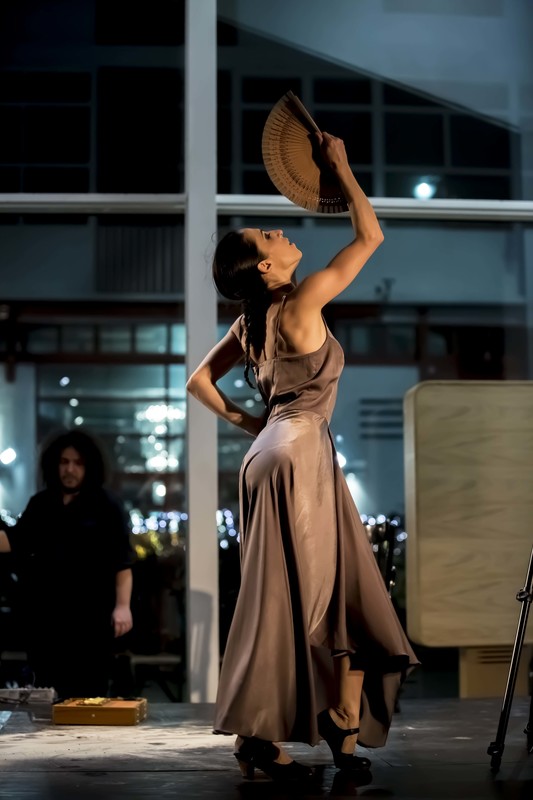
《Bagatelles(輕快小曲)》是一系列非常優雅的創作,與舞者安娜・莫拉萊斯(Ana Morales)合作,結合聲音裝置與佛朗明哥舞蹈。為了將佛朗明哥舞蹈成為一個劇目,《Bagatelles (輕快小曲)》融合多項元素。舉例來說,恩里克製作了一樣用線拉扯的樂器,並經過藝術家約亨・蔡茨(Jochen Zeirzer)的同意採用他的作品 Abanico 進行程式的改寫,最後扇子機械不僅能夠創造聲音元素,同時也成為了人工的佛朗明哥舞者。另外恩里克也與藝術家阿爾貝托・博伊姆(Alberto Boem)共同創作,用雷射切割壓克力片,並將之製成類似黑膠的物件,製造在舞台上類比迴圈的樂器,回應佛朗明哥舞蹈風格的節奏。
恩里克:
「 《Bagatelles(輕快小曲)》 是一個非常特別的產出,因為我不想要有任何聲音不是從實體可見的元素中生成、不是從這舞台上製造出來的。每個元素在我的舞台美學之中,都是一種電子樂器、或是現場聲音,所以完全沒有事先錄製好的音樂。所有聲音都是用電子音樂樂器被演奏出來的,但卻是由我或是舞者,來使它們成為真實。
這是一個非常不同的產出,因為舞台上的舞者、樂器,與音樂元素之間的關係都緊密的結合,編舞跟音樂並不是兩個平行的過程。這樣說吧,舞蹈跟聲音是同一件事情,因為在這件作品中,若沒有舞蹈,音樂也就失去理由,也沒有了能去做發展的 input。」
對於這件作品,我也提出了一個問題:你認為機械的動態會限制舞者的行動,或者其實給了舞者更多的可能性?
恩里克:
「 嗯⋯⋯舉例來說,有些狀態下,舞者做了很多地板上的舞蹈(指將身體傾倒於地面),然後我用了我一件作品《Tangible Score(有形體的刻劃)》 的觸碰式麥克風系統,她便用身體的動態創造出了音樂,她實際拓展了她的身體動態系統。在這件作品中的另一個案例,是她與 Abanico(西班牙文:扇子)裝置跳舞。我想她編舞時考慮到了Abanico,並很顯然的是在佛朗明哥舞蹈標準的規範之下,在佛朗明哥舞中最重要的事之一就是不踰越風格的規則。但我真的必須得說,這個編舞非常完美。
它(機械裝置)並沒有限制舞者,因為佛朗明哥舞蹈有非常嚴格跟清楚的規則,給了舞者一個發展的依據及框架。然後她跟機械的互動便是有趣的部份,是看她如何與機械交流並賦予其生命。在這裡,交流是件很重要的事。」
Bagatelles – Excerpts:
Tangible Score

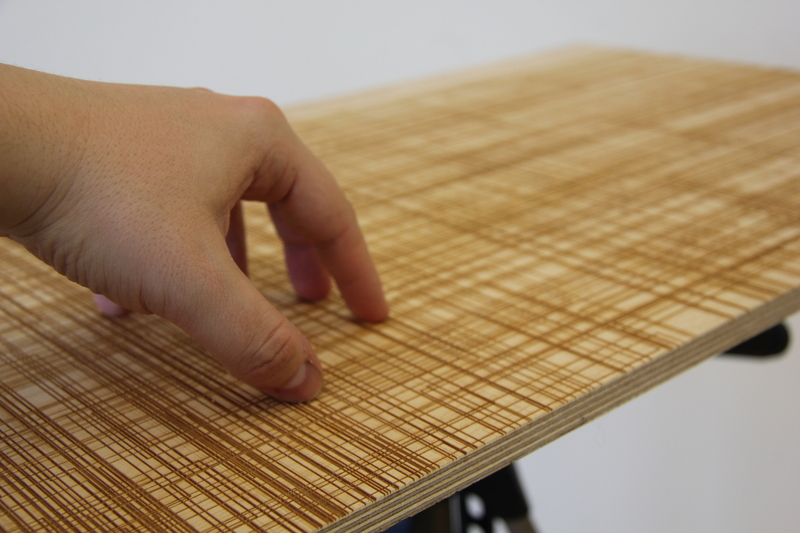
目前恩里克仍專注在電子樂器的設計,他的研究創作《Tangible Score(有形體的刻劃)》是一個觸碰式的介面,他雕刻(CNC)多樣圖形於數塊木板的表面,這些木板成為實體的介面。藉由觸碰木板刻紋的經驗,觀眾創造聲音與編曲。但是這些圖樣跟音樂的連結又是什麼呢?
恩里克:
「 對我而言這件作品的重要性在於,如何用使用上的特性與特定配置,來讓物理性的媒材可以被視為一種音樂的刻畫。所以物理啟發源自物體,它們可以修改妳跟物件互動的方式。我所做的事情便是修改或塑造物件,並不是隨處可見的物件,而是創造以特定方式操作的新種物件。
我創造了這些富有圖樣的板面,並邀請你以特定的方式與它們互動。我並不是創造了某種動作或是姿勢等等。然後你用它所做的事,便是得到強化的聲音媒材,他們(觀眾)創造了聲音而且也 mapping 了視覺部分,這是一件重要的事。這樣說吧,它(圖樣)並沒有比你變成一個導電體去從這些刻痕中創造聲音還要重要,因為作品的視覺部分其實僅是刻痕而已。我所思考的刻痕是一個讓你具體行動的媒介,當你在觀看這些刻痕並隨之變動,你便創造了這個作品。
當然你有你自己對於聲音的直覺,然後直觀的行動,我想這是作品革新的部分 – 如何讓媒材與物件吸引觀眾,使之玩樂並駐足不前。」
Tangible Scores:
恩里克的作品到目前為止不斷的跨越各領域,他錄製許多聲音計畫,與舞者、科學家、藝術家合作,甚至跨足到商業廣告的聲音配置,從他的作品集之中我們可以看到他朝向聲音藝術與音樂的方向進展,而且他也有相當的經歷。但聲音藝術一詞是學術界分類藝種的名詞,我好奇的是他的個人美學與哲學思考想要走向哪裡?
恩里克:
「 我所有的作品中有幾種傾向將它們串聯在一起。2005 年我從《Algorithmic Echolocation(演算法回聲定位)》開始,到現在多多少少是我作為一個聲音藝術創作者的十年生涯。嗯,或許這早期的十年中我嘗試拓展聲音藝術的不同方向, 我想這是完全有必要的,你做了一個作品、然後又是一個、然後再另一件,或許你覺得他們非常不一樣,但最終你發現他們有很多的關聯。你是一個可以了解這事的人,作品有很多的共同點,也許不是那麼正式的那種,但是你的創造方式、聲音的質感還有你擁有的態度,這些都是很個人的東西,最終它們都存在你作品的點子之中。
那接下來的十年嘛,我想會是個問號。大概會在某一次縮限一點新的探索,並專注在一樣特別特別的作品上。但我也並沒有對這件事想太多。或許找關連也是一種呈現聲音的方式,讓我們等著看吧。
但我想我還是想要享受人生,這是我不會改變的人生態度。或許未來少做一點裝置作品,因為它真的非常消耗,然後玩樂(音樂)多一點吧。
註 1:為德國電子藝術中心位於卡爾斯魯厄
***
Enrique Tomás is not just a sound artist, but also a telecommunications engineer and an interdisciplinary creator form Madrid, Spain. Since 2012, he is a PhD Candidate at the University of Art and Industrial Design of Linz, Austria. He has been working and playing with music for many years. SInce his early years of lying on the floor of living room and then listening to the spectrum ZX video game loading as a concert is his memory when he was a child.
《Algorithmic Echolocation》is one of first official project with team and was very successfully exhibit in ZKM, Ars Electronica, Sonar festival and so on. And later, he has series of performances which inspire resident and against the system are 《Atmosfera::Sustrato_Ruido》. It is an idea of performing the noise in the city, for instance, he use piezos to collect the sound and amplify, then paly out immediately. Moreover, in the series videos, we can see he put the speakers interfere or embed the public space of city as a symbol in order to remind people our noise and sound in the city are part of culture. Bellow, He has more description of this work.
“Enrique: It was an important moment working in public space to escape from the gallery, space in the club and those spaces, and then make activities in public. We also incorporated many ideas of activism like noise activism. There was a campaign in Madrid for against the noise of the others, for example, people are on the street, or people go out the bar. And then, that’s the one has to take care the noise of street because it’s noise of city. Those politicians were trying to make a city more silence, but it was actually one of way to control, one of way to make a culture of people quieter. And then, we end up the project with that we try to enhance motivation of people to make more creative noise. By different perspectives, for example the concert with piezo, it was more going through the street and amplified what is normal of sound, and being in the atitude of a concert. So, somehow our material and our music was a city. And, we try to make them official sound material for composition. “
About《Bagatelles》, it is a very elegant series project was combined sound installation and flamenco dancing with dancer Ana Morales. To play a repertoire of flamenco,《Bagatelles》was incorporated a lot of elements, for example, Enrique produce an instrument with ropes. He has adopted form Jochen Zeirzer’s Abanico and been reprogrammed it. The fans robot creates the sound and become the artificial flamenco dancer. Put the analog loop instruments on the stage by laser engraving surface of transparent acrylic, and play them as like vinyl records was cooperated with Alberto Boem. It responds of flamenco dance styles in beats with some loops.
“Enrique:《Bagatelles》it was a completely different approach because I didn’t want to have any sound not coming from the visible elements of the work. That was not produced on the stage. Every element on the scenography was a kind of electronic instruments or was live, so there was no record of music at all. And, everything was played with electronic music instrument, but really by me or by the dancer. It was a different approach because the relationship of the dancer and the instrument, element of sound in the stage were completely engaged. So there were no two processings in parallel the choreography and the music. Dancing and sound were the same thing let’s say because without dancing, the music had no sense and no inputs to be development on nothing.”
And, I also brought out a question – do you think the robot movement limits the dancer and it gives some possibilities?
“Enrique: Yea, for example, there were some moments, when she was dancing on the floor (let the body or lied on the floor). Then I used the system of《Tangible Score》with contact microphones, and then, she was creating the music with her movement. She explored the physicality of her movement for this system. In the case, she was dancing with “abanico (Spanish: fan)”. I think the point is that she creates this choreography with thinking on the “abanico (Spanish: fan)”. It was super under the standard of flamenco. It was a clear one. And one of the most important things in flamenco is not going out of the style rules, but I have to say that the choreography was perfect. It was not limiting her because the flamenco has very strict and clear rule that she can work with and develop, so it gives her the framework to develop around. And the analysis so far of flamenco was very clear and was correct everything. And then, there was some communications with machine. That thing was an interesting part – how she created some communication and animate with machine. That was an important thing of communication.”
Currently, Enrique focuses and still keeps working on electronic music instruments design. His research work《Tangible Score》is a tactile interface. Many pieces of wood board was carved different pattern. It provides a physical interface to audiences to touch the surface of boards, create and composite the sound and music, experience it. But, what’s the connection of pattern and musical part?
“Enrique: For me the important part of this project is how the affordances or the specific configuration, its physical materiality can be considered a musical score. So physical helps it how this affordances but you get from the object. They can modify the way you interact with the object. So what I’m doing is modifying or shaping objects. Not objects you find everywhere, but creating the objects for particular way of using them. So, I created these boards with patterns to invite you to interact with them, in particular way, not creating the specific movement, gestures and so on. And then, what’s you do with it is you get the reinforce with a sonic material. And this is the important thing, they created some of sounds and they mapping to the visual part. Let’s say, it’s not so important as much as you are conductor to create something musical out of this score because the visual content of work is actually a score. It’s a material that makes you move in particular way that’s what I consider it a score. Once you are reading the score with your time movement, you create a work. And, of course, you will have own musically intuition for reading them in particular also way, more than other level, and this is what I think is the inovation of the works - How this material and this object make you play and then staying in front of them. ”
So far, Enrique’s works are very interdisciplinary. He has done various sound recordings, cooperated with dancers, scientists, artists, finished tactile robot, and even commercial advertisement soundtrack. His work collection shows that he is mainly going on sound art/music, and already has abundant experiences of it, but, sound art is an artistic field for academy art system. I wander what is his general artistic and philosophy idea? Where he wants to go forward?
“Enrique: There are several trends connecting all my works. As you interview... in 2005, I start with《Algorithmic Echolocation》, and is more and less ten years after of the official ... as a sound artist. yea, maybe these ten first years has been on exploration of sound art in many directions. I think this is totally necessary, you do a work than another and another. Maybe, sometimes, you think they are many different. Finally, there are some connections are oneself. You are a person has to stand this, and then, there’s a lot of in common. Maybe not a formal, but the way you created, the quality of sound, the type of attitude that you have. These things are more personal, and these are all in my works in these ideas. And the next ten years, let’s say, it will be the question. I think once time to limit a little bit exploration and go more it to into one specific type of work, but I am not so much thinking on this. I’m developing the tangible scores. I think it’s something very personal idea, but maybe connecting it more to that types of representation of sound also. Yea, let’s see, but I think I’m still enjoy playing life. This is something that I am not gonna change playing life. Maybe doing less installation because I think it’s very consuming actually. I want to play more probably.“


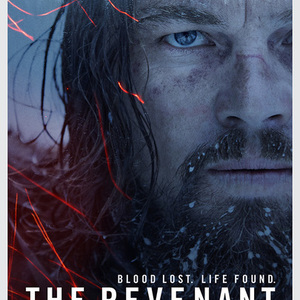
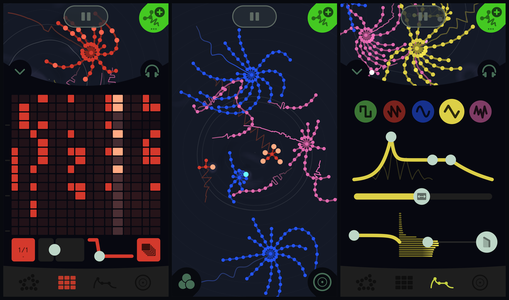
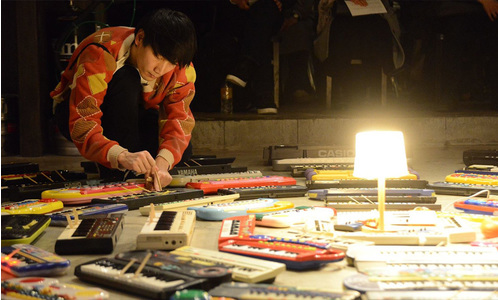
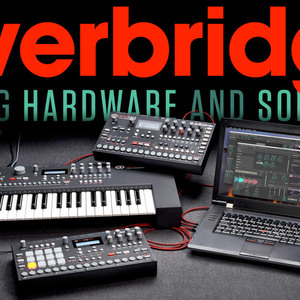
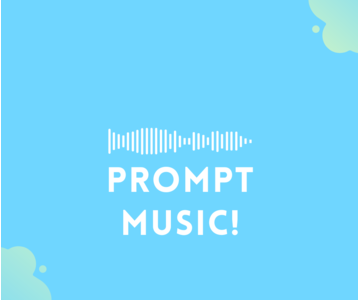
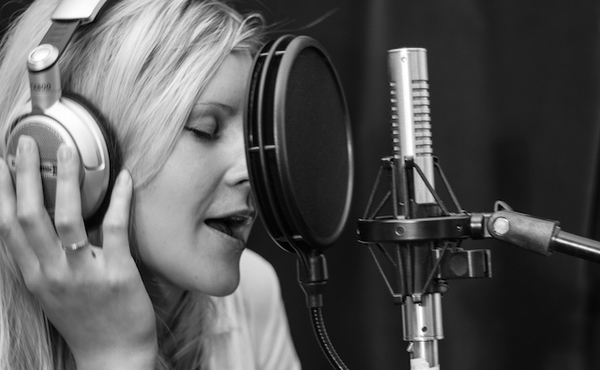
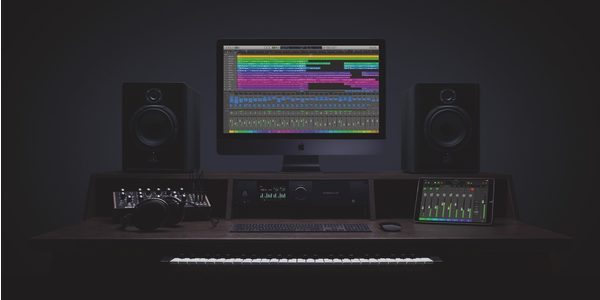
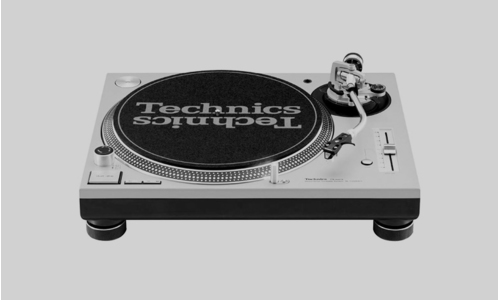
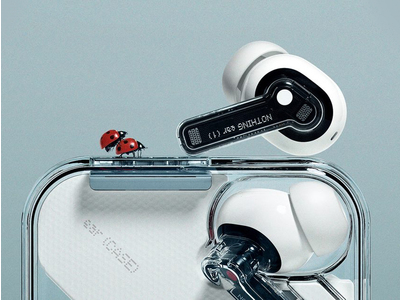
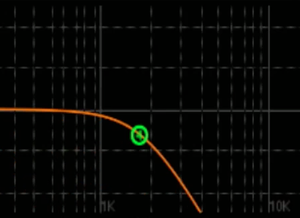



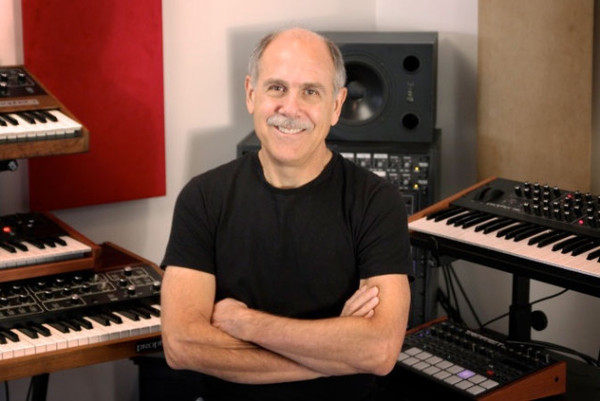

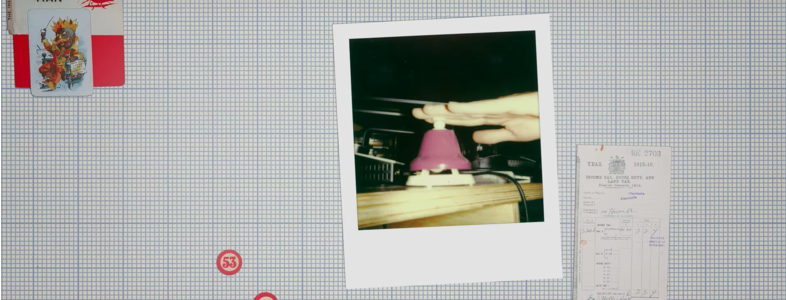
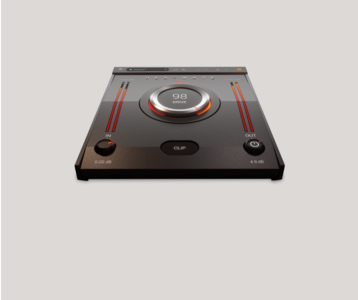
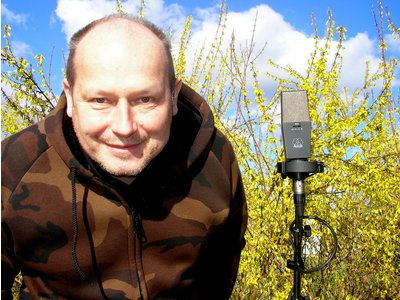
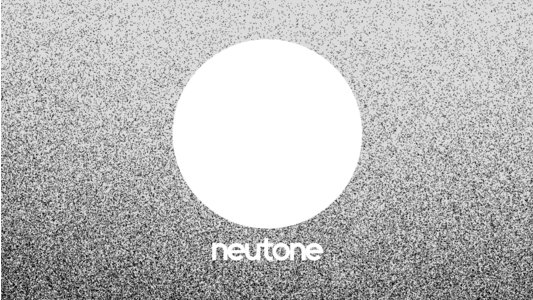

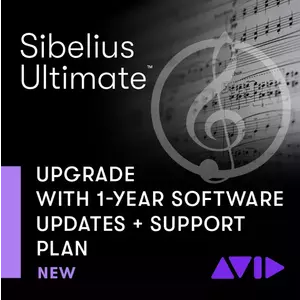
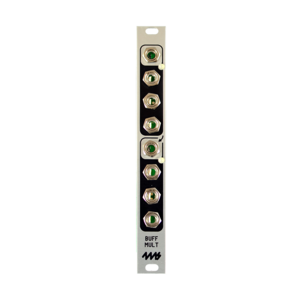

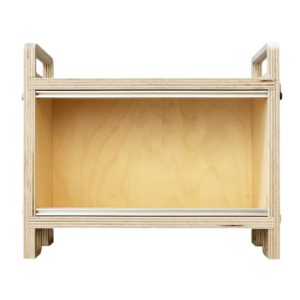

討論區
目前尚無評論